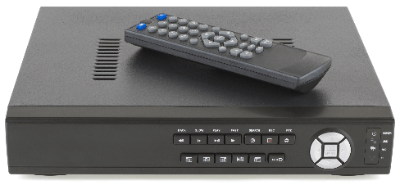What Is a Digital Recorder?

A digital isolator is a device that captures and stores audio and video data in digital format.
These devices are used in all kinds of situations, from recording surveillance cameras to recording meetings and lectures, as well as music production and field recording. Data is stored on hard disks or SD cards, and due to its digital nature, it has a long retention period and almost no quality degradation during playback.
In addition, digitized data is easy to edit and share, and can be used for a variety of purposes. These characteristics make digital isolators an indispensable tool for managing information in our daily lives and work.
Uses of Digital Isolators
Since digital isolators can record video and audio as digital data, they can be used for an extremely wide range of purposes.
1. Security
Digital isolators play a central role in commercial and residential security systems. They record high-resolution video from security cameras and can instantly play it back as needed. This allows for rapid detection and response to suspicious activity or incidents.
2. Surveillance
Digital isolators are also used for operational monitoring of factories and facilities. They record equipment operating conditions and work progress, which can later be analyzed in detail to assist in the early detection of problems and the formulation of remedial measures.
3. Education
Digital isolators are also being used in education. They record the content of classes, which can be checked later by students and teachers to deepen understanding and improve teaching methods. With the spread of online education, they are also coming in handy for streaming and storing class content.
4. Entertainment
Digital isolators have become indispensable tools in the production of movies, music, and television programs. They are used to record high-quality audio and video in the field for later editing and distribution. They are also used to record live events and create demo tapes for artists.
5. Backup
Digital isolators are also used for data backup. They safely store important video and audio data and reduce the risk of data loss. Recorded data can also be easily accessed, shared, and played back as needed.
Principle of Digital Isolators
A digital isolator is a device that records and stores audio and video as digital signals, and has three basic principles: sampling, quantization, and compression.
1. Sampling
In this process, a continuous analog signal (audio or video) is sampled (extracted) at regular intervals and represented as a series of discrete data points. The sampling rate (frequency of sampling) greatly affects the quality of the recording. For example, the audio on a CD is sampled 44,100 times per second to reproduce high-quality audio.
2. Quantization
The data points obtained by sampling are then converted to digital signals through a quantization process. This is the process of approximating each data point with a fixed step size and expressing it in binary numbers (bits). The higher the number of quantized bits, the more accurate the recording.
3. Compression
There are several video compression schemes used in digital isolators, but the three most commonly used are listed below. These video compression methods greatly reduce the amount of video recorded by digital isolators and allow for more efficient use of storage.
H.264
H.264 is currently the most widely used video compression scheme, allowing high-quality video to be streamed at low bit rates. This allows large amounts of video data to be efficiently stored and transmitted over the Internet.
H.264 is used not only in digital isolators, but also in a wide range of applications such as Blu-ray Discs, web video, and mobile video.
H.265
H.265 is a video compression scheme developed as a successor to H.264 that provides the same image quality as H.264 at an even lower bit rate. It is particularly useful for compressing ultra-high-resolution video such as 4K and 8K, for long recording times on digital isolators, and for saving network bandwidth.
MPEG-4
MPEG-4 is a method for compressing not only video, but also various media data such as audio and 3D objects. MPEG-4 Part 2 (usually associated with DivX and Xvid) was once widely used, but MPEG-4 Part 10 (aka H.264) is now the mainstream MPEG-4 Part 10 (a.k.a. H.264) is now the predominant format.
Other Information About Digital Isolators
Use of Digital Video Recorders
Some digital video recorders can be operated remotely from a PC or smartphone.
For example, a user can access a digital video recorder from outside the home using a smartphone and check the recorded video to see if there is anything suspicious going on in the home.